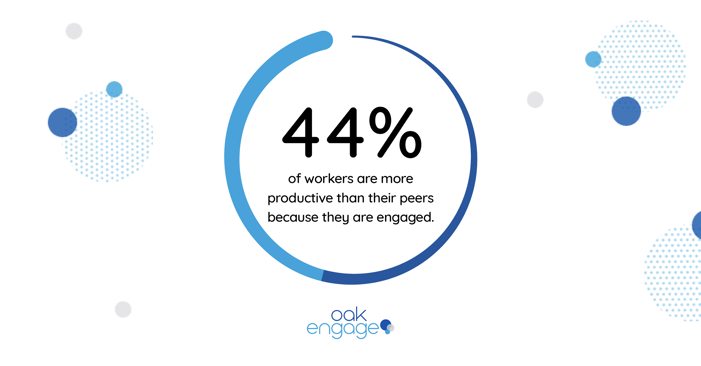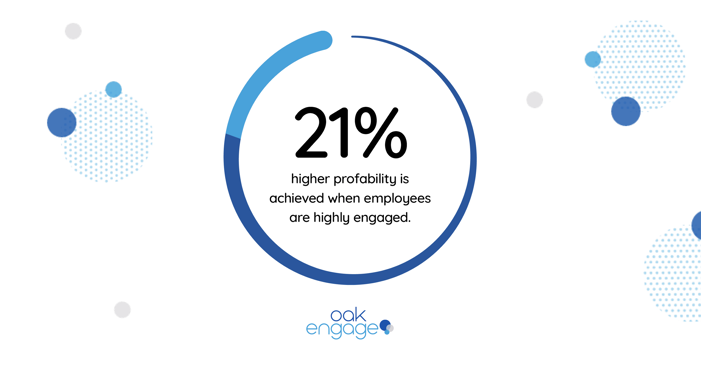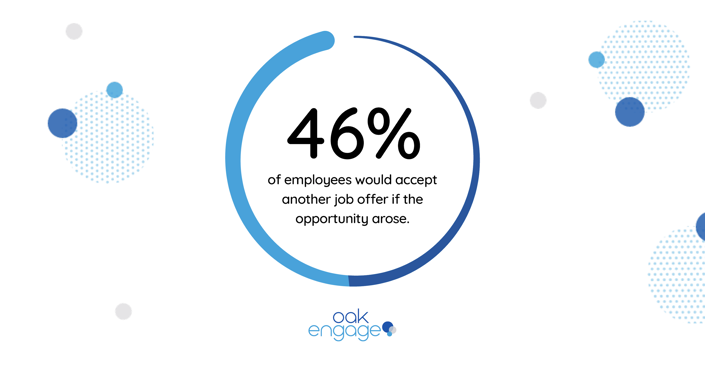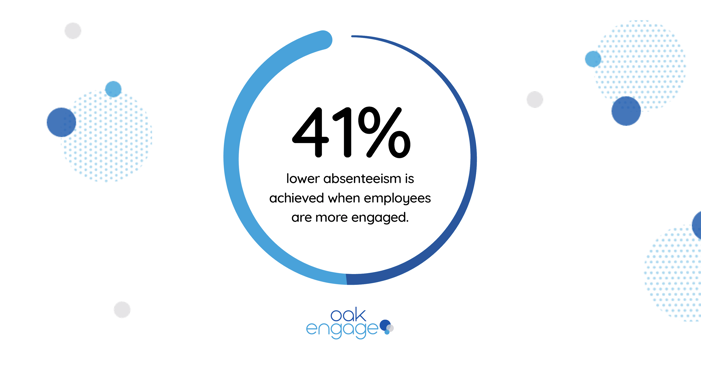Employee engagement is vital for any organisation. But what does it really mean and why is it so important? In this blog we’ll cover:
- Employee Engagement Definition
- 7 Key Benefits of Engaged Employees
- Benefit 1: Increased Productivity
- Benefit 2: Greater Employee Retention
- Benefit 3: Higher Profits
- Benefit 4: Enhances a Culture of Engagement
- Benefit 5: Greater Employee Loyalty
- Benefit 6: Lower Absenteeism
- Benefit 7: Better Work/Life Balance
Employee Engagement Definition
Employee engagement is the emotional commitment an employee has to their organisation and its goals.
Recommended Reading 📖: Employee Engagement: The Ultimate Guide for 2021
7 Key Benefits of Engaged Employees
A company that supports and encourages employee engagement will ultimately be more successful and perform better overall. Here are 7 key benefits of engaging your workforce.
Benefit 1: Increased Productivity
Reports suggest that engaged employees are 44% more productive than their peers.

Employee productivity is the engine on which a business thrives. The more efficient your workforce is, the more your company will succeed. Productive employees focus on the right things at the right times. There’s very little wasted effort, and the work they do creates the results you want.
Prioritising engaging your workforce means you’ll also be boosting your employees’ productivity. Both your business and staff will succeed.
Benefit 2: Greater Employee Retention
When employees can't utilise their strengths and don't feel challenged at work, they're likely to be unhappy and more likely to leave for another role.
On the other hand, engaged employees don't have a reason to look elsewhere for work as they want to see their company succeed.
While it’s impossible to bring your employee retention to 100%, it’s certainly possible to create a loyal workforce where your people stay with your organisation for a prolonged time period. This all comes down to employee engagement.
Benefit 3: Higher Profits
Research shows that highly engaged organisations have 21% higher profitability than those who are disengaged.

You should always make sure you invest in your employees to keep engagement high. This will preserve the profit growth of your organisation and success will continue to increase.
Benefit 4: Enhances a Culture of Employee Engagement
What is a culture of employee engagement?
According to Forbes, it’s a workplace that's “designed, first and foremost, around its company values.” Creating a culture of employee engagement requires “checking in with their employees to ensure that the company mission aligns with the ways that people currently work and the ways that they want to work.”
Ideally, you want your engaged employees to present your company’s values every day at work without realising they are doing it. Appreciating some of your most engaged employees is one step towards creating a culture of engagement.
Recommended Reading 📖: Company Culture: A Guide for 2021 & Beyond
Benefit 5: Greater Employee Loyalty
Just because an employee is not actively looking for another job, that doesn't mean they won't leave you for another company if something better came along. Shockingly, 46% of employees would accept another job offer if the opportunity arose.

However, when employees are engaged, they are more likely to stay with one company. This is because they care about the success of the organisation that they\re in and are challenged by their work.
Benefit 6: Lower Absenteeism
Highly engaged workforces see 41% lower absenteeism.

Taking the occasional day off can be a sign that employees are engaged. They are more likely to feel secure in their role, and they're confident one missed day won't affect the work to be accomplished.
However, you should be concerned about engagement levels when patterns of absenteeism begin to increase.
Benefit 7: Better Work/Life Balance
Engaged employees are able to have a better work/life balance. If your employees are experiencing a sense of burnout or they’re unhappy in their job, their home life will start to become affected.
However, people who are highly engaged and happy in their job are more likely to have more energy after work and are able to switch between work and home life quite simply and easily.
FAQ’s
How Do You Measure Employee Engagement?
The most common way to measure engagement is by using pulse surveys and general discussions with your team.
Read our blog to find out more: Measuring Employee Engagement: The What, Why & The How
How Do You Improve Employee Engagement?
Improving employee engagement is all about improving various factors in your workplace.
Follow our 10 Simple Steps on How to Improve Employee Engagement


![Why Is Employee Engagement Important? [Key Benefits]](/media/fqbdnlfb/key-benefits-header.png?width=50)
